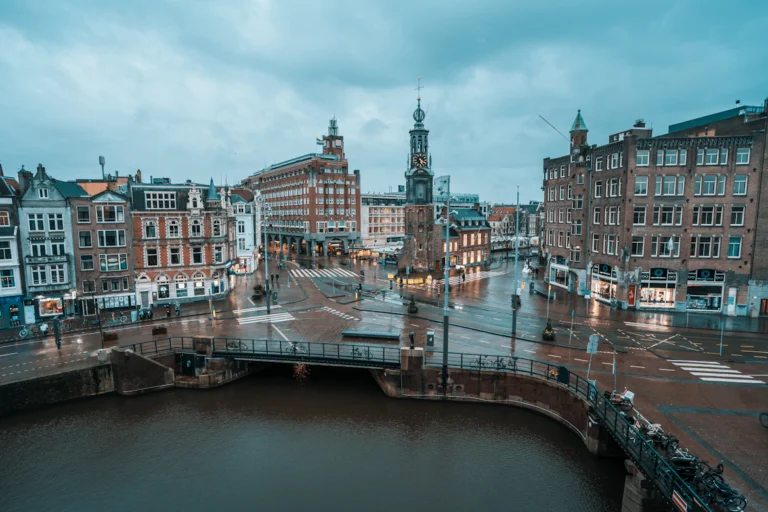Ship Structural Parts: Functions, Systems, And Materials
Workers welding large steel plates onto the hull of a ship, part of the construction process.
Understanding ship structural parts is crucial for anyone venturing into the maritime industry. These components form the backbone of every vessel, ensuring its functionality, safety, and efficiency at sea. From the sturdy hull to the intricate machinery, each part serves a vital role in the operation of ships. In this article, we will explore the significance of ship structural parts, going into their various components, and examine the materials and systems that contribute to their construction.
Gaining insight into these fundamental elements will better equip you to navigate the complexities of shipbuilding and maritime operations. Continue reading to learn more about ship parts, functions, and the materials used in building them.
What are Ship Structural Parts?
Ship structural parts are the essential components that constitute the physical makeup of a ship, providing it with structural integrity, buoyancy, and navigability. Basic parts include the keel, which forms the spine of the vessel; the hull, which is the watertight body; and the superstructure, the area above the main deck housing the bridge and crew quarters.
Other crucial components are the bulkheads and frames that offer stability and compartmentalization, ensuring safety and functionality. These parts work in a sophisticated network of systems, utilizing materials like steel, aluminum, and composite fibers to withstand the harsh marine environment, balancing strength with efficiency.
Components of Ship Structural Parts
A photo of a ship’s anchor and chain is vital for securing the vessel while at anchor.
A ship’s structural integrity and functionality depend on its core components, each meticulously designed to fulfill specific roles. These elements contribute to the vessel’s stability and buoyancy and ensure its durability against the harsh marine environment.
Hull Plating
Hull plating forms the ship’s skin, a crucial barrier that separates the internal workings of the vessel from the aquatic environment. Made primarily from solid steel or, in some modern applications, lightweight aluminum or composite materials, hull plating ensures watertight integrity and contributes to overall strength and buoyancy. The plates are carefully welded together, forming the ship’s outer shape and providing the first line of defense against the corrosive seawater and physical impacts.
Keel
Often referred to as the backbone of a ship, the keel runs along the bottom from the front (bow) to the back (stern). It’s the first part laid down in the construction process, serving as a foundation for the rest of the structure. Traditionally made from solid steel, the keel bears the entire ship’s weight, providing essential structural integrity and stability, particularly in rough seas. Modern advancements have led to the development of flat plate keels in many vessels, which accommodate the complex geometries of contemporary ship designs.
Rib Cage
Mimicking the rib cage of a living creature, the ship’s rib cage, or frame, consists of a series of curved bars or flat plates attached to the keel and extend outward towards the hull plating. These ribs give the ship its shape and structural strength, supporting the hull and deck. They also help to distribute the stress and strain the vessel experiences during its voyages, preventing deformation of the hull. The materials used for the rib cage have evolved from wood in ancient ships to steel and aluminum in modern designs, offering improved strength and resilience.
Beam
The beam of a ship refers to its width at its widest point. More specifically, in structural terms, beams are horizontal structures that span the top of the rib cage, supporting the decks and contributing to the vessel’s overall strength and stability. These beams prevent the ship from twisting and warping under stress, such as when navigating heavy seas. Beams are typically constructed from the same materials as the hull and rib cage, ensuring uniformity in strength and durability across the ship’s structure.
Bow and Stern Structure
The bow and stern are the front and rear parts of the ship, respectively, each uniquely designed to fulfill specific functions. The bow is shaped to allow the boat to cut through the water efficiently, minimizing resistance and improving speed and fuel efficiency. It often incorporates a bulbous bow below the waterline to reduce drag further. On the other hand, the stern houses the propellers and rudders, crucial for the ship’s propulsion and steering. Both the bow and stern structures are reinforced to withstand the pressures of water and weather, with materials and design techniques chosen for optimal performance and safety.
Other parts include:
Bulkheads
Bulkheads serve as the ship’s internal walls, crucial for enhancing structural strength and providing watertight compartments for the vessel’s safety. They minimize flood risk by containing water in case of hull breach. Constructed typically from steel, they contribute to fire resistance and improve overall vessel stability by evenly distributing weight.
Decks
Decks form the horizontal floors across the ship’s structure, hosting various activities and machinery. Made primarily from steel or aluminum, they segregate the ship into layers, offering spaces for cargo, passenger accommodation, and navigation. The upper deck is exposed to the environment, while lower decks are enclosed, each designed for specific functions and safety requirements.
Superstructure
The superstructure includes the bridge, living quarters, and sometimes entertainment venues on passenger ships. Its design is critical for ship stability; excessive height or weight can affect the vessel’s center of gravity. Materials like lightweight steel and composites are used to construct this part, ensuring durability while keeping the overall mass manageable.
Rudder and Propeller
The rudder, attached to the stern, acts as the ship’s steering device, while the propeller, driven by the ship’s engines, propels the vessel forward. These components are essential for navigation and maneuverability and are designed from robust materials like bronze or stainless steel to withstand marine conditions and operational stress.
Masts and Rigging
Masts tower above the deck, supporting sails and rigging on traditional sailing ships. These days, they may also carry navigation lights and communication equipment. Rigging, consisting of ropes and chains, controls sail positions, which are crucial for harnessing wind power. Modern materials like carbon fiber are used for strength and flexibility.
Funnel or Stack
The funnel expels exhaust gasses from the engine room, a recognizable feature of steamships and many motor vessels. Its design and placement are optimized to direct emissions away from the ship, minimizing impact on crew and passengers. Modern funnels are often streamlined into the superstructure, contributing to the ship’s aerodynamic profile.
Main Materials for Building Ship Structural Parts
Close-up image of a ship’s rudder and propeller, essential components for steering and propulsion
The durability, efficiency, and overall performance of ships heavily depend on the materials used in their construction. Here are the primary materials employed in creating ship components, highlighting their unique properties and applications.
Steel
Steel remains the most widely used shipbuilding material due to its strength, resilience, and cost-effectiveness. Its high tensile strength makes it ideal for large vessels’ hulls, decks, and structural frameworks, offering robust protection against physical impacts and corrosive elements. Steel’s versatility allows it to be molded into various shapes, essential for the complex geometries of modern ships. Furthermore, advancements in steel technology, including the development of high-strength, low-alloy (HSLA) variants, have enhanced its performance, making ships lighter, faster, and more fuel-efficient.
Aluminum
Aluminum stands out for its lightweight properties, offering a significant weight reduction compared to steel. This reduction increases fuel efficiency and higher speeds, making aluminum a preferred choice for fast ships like ferries, naval vessels, and certain luxury yachts. Its excellent corrosion resistance further adds to its appeal, minimizing maintenance needs. However, aluminum’s higher cost and lower strength relative to steel limit its use for specific ship parts, where weight savings justify the expense.
Other materials used are:
Composite Materials
Composite materials, including fiberglass and carbon fiber reinforced polymers (CFRPs), are increasingly popular in shipbuilding. These materials combine lightweight properties with high strength, offering significant advantages in terms of performance and durability. Composites are particularly valued in constructing high-speed boats, racing yachts, and naval vessels, where weight reduction is critical. Their resistance to corrosion and fatigue also makes them ideal for superstructures and other above-water components, contributing to lower maintenance costs and longer service life.
Titanium
Though less common due to its cost, titanium is used in specific applications where its superior strength-to-weight ratio and exceptional corrosion resistance are crucial. This includes parts exposed to highly corrosive environments, such as propellers and piping systems in chemical tankers. Titanium’s durability and resistance to seawater make it a valuable material for long-term applications despite its initial expense.
Wood
While not as dominant as in the past, wood still finds its place in marine construction, especially in small boats and luxury yachts, where aesthetics and traditional craftsmanship are valued. Wood’s natural buoyancy, ease of repair, and thermal insulation properties make it suitable for specific applications. Modern treatments and manufacturing techniques have also enhanced its durability and resistance to rot and pests, ensuring a longer lifespan for wooden components.
A table showing the different construction materials and their characteristics
| Material | Characteristics | Disadvantages |
| Steel | High tensile strength, versatile, cost-effective, and durable against impacts. | Heavy requires protective coatings to prevent corrosion. |
| Aluminum | Lightweight, corrosion-resistant, increased fuel efficiency. | Less strength than steel, higher cost, susceptible to stress. |
| Composite Materials | Lightweight, high strength, corrosion-resistant, low maintenance. | High initial costs and complex repair processes. |
| Titanium | Superior strength-to-weight ratio, highly corrosion-resistant, durable. | Significantly more expensive than steel and aluminum. |
| Wood | Natural buoyancy, ease of repair, aesthetic appeal, and good thermal insulation. | Susceptible to rot and pest damage without proper treatment, less durable under heavy load. |
Conclusion
Vital for global trade and movement on waterways, ships come in many shapes and sizes, each with core components crucial for their operation. These include the hull, which forms the main body, the navigation bridge for steering, and the engine room for propulsion. Today’s ship vessels incorporate advanced technologies, enhancing their capabilities for sea travel. Regular inspections and maintenance of these essential parts, especially those that pose risks, are paramount to ensure safety and efficiency in the wide and challenging marine environment.






